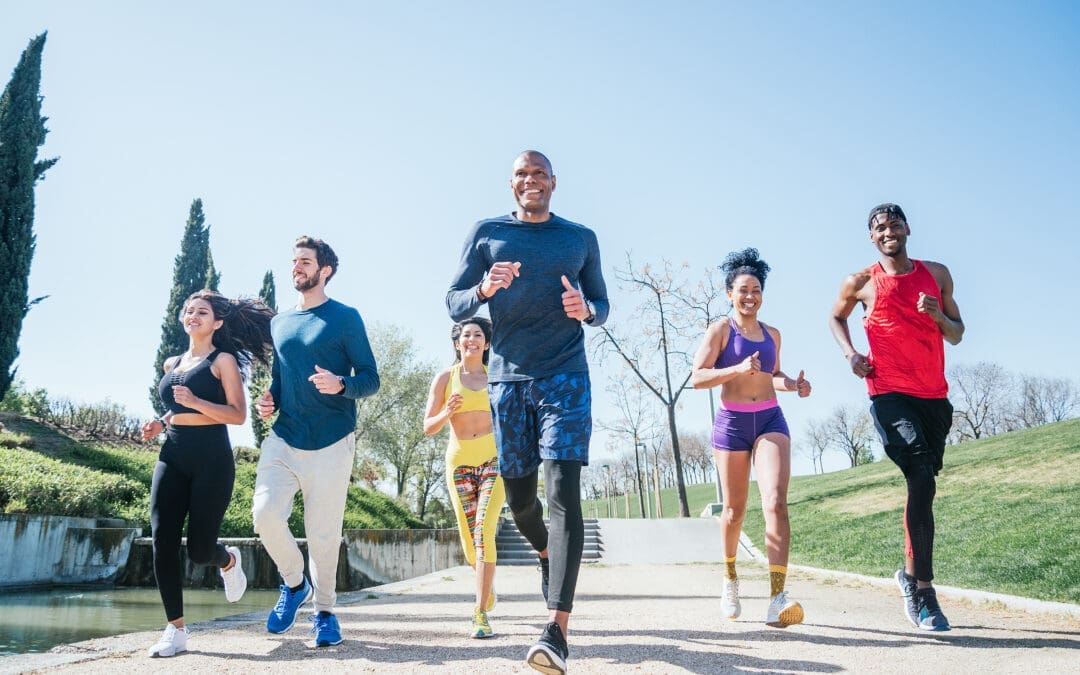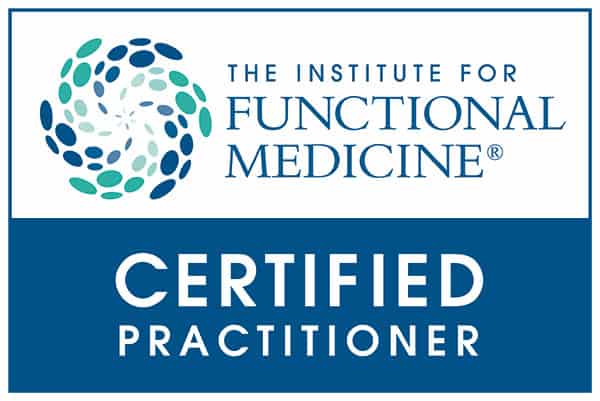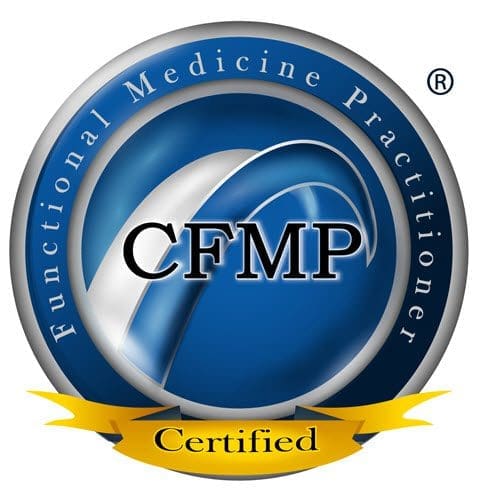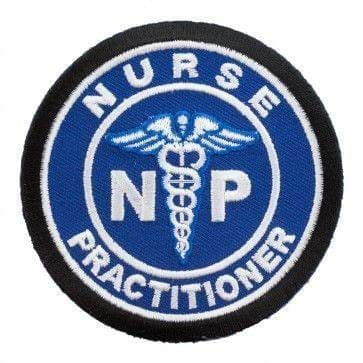Maximize your running potential with strength exercises and chiropractic care tailored for runners’ needs and challenges.
Contents
Running Strong: How Chiropractic Care and Strength Training Transform Runners’ Health and Performance
Introduction
Runners everywhere constantly seek the next breakthrough—whether it’s shaving seconds off their 5k, finally nailing that marathon, or (let’s be real) just conquering stairs without wincing. The endless pounding of pavement takes a toll. Enter chiropractic care and strength training. Not only do they promise fewer aches and lightning-fast recoveries, but they also empower you to run stronger, longer, and better.
Backed by clinical insights from Dr. Alexander Jimenez, DC, APRN, FNP-BC, and recent scientific research, this comprehensive post will reveal how combining chiropractic care with targeted strength exercises can enhance every runner’s journey—whether you’re a total beginner, a weekend warrior, or an ambitious marathoner.
Let’s run through the benefits, explore the science, and have a laugh or two along the way. And in the end, you’ll find a serious note and disclaimer, so nobody sprints past the important details.
The Science-Backed Benefits of Running
Running is more than just a sport—it’s a prescription for longevity and wellness. Even running at a slow pace for just 5-10 minutes daily can significantly reduce the risks of cardiovascular diseases and all-cause mortality. Additional benefits include:
-
Superior Heart Health: Regular running conditions the heart, improves blood pressure, and boosts HDL (“good”) cholesterol.
-
Enhanced Memory and Mental Health: Aerobic exercise like running increases hippocampal volume (a fancy way of saying it boosts your memory engine), reduces stress, and helps fight depression.
-
Stronger Bones and Joints: Contrary to old myths, studies show that runners have lower rates of osteoarthritis and back problems than non-runners and even a lower risk of knee arthritis.
-
Weight Management and Improved Sleep: Running torches calories, helps manage weight, and promotes healthier sleep patterns.
If you run, you’re literally investing in your happiness, heart, and future joint health. Not bad for an exercise that only requires shoes, a route, and maybe the will to avoid being chased by your neighbor’s dog.
Why Runners Need Strength Training
Runners—especially the stubborn ones—often avoid strength training, fearing bulkiness or “just wanting to run.” Spoiler alert: Strength training actually increases running efficiency, improves stride, builds fatigue-resistant muscles, and fortifies your body against the repetitive stress injuries that plague most runners. Here’s what happens when you add strength exercises:
Enhanced Running Economy and Efficiency
-
Better Performance: Strength workouts reduce the “cost” of running by making each stride more efficient, resulting in less energy used at the same (or faster) pace.
-
Injury Reduction: Runners who perform total-body strength programs experience fewer overuse injuries and faster recovery times. Core and unilateral (single-leg) exercises improve stability, thereby reducing injury risk.
-
Pain Relief and Musculoskeletal Integrity: Resistance training mitigates chronic pain, strengthens joints, and increases tissue integrity—crucial for absorbing shock with every step.
As running experts say: Strong legs (and core) run longer—and with fewer sob-inducing moments after a tough hill repeat.
Essential Strength Exercises for Runners
Dr. Jimenez recommends strength routines focused on functional, compound movements that mimic the demands of running. Below are evidence-based essentials (bonus: you can do many of these with just your own body weight):
1. Squats and Variations
-
Why: Build quads, glutes, hamstrings, core, and calves—the main muscles firing in every stride.
-
Types: Bodyweight, goblet squat, Bulgarian split squat, and partial (half) squats for heavy lifts.
-
How: Stand tall, lower hips as if sitting in a chair, keep knees behind toes, and rise with controlled power.
2. Lunges (Forward, Reverse, Lateral)
-
Why: Enhance unilateral (one-leg-at-a-time) stability, glute power, stride alignment, and hip flexibility.
-
How: Step forward or back, lower the rear knee to just above the ground, push through the heel to return.
3. Deadlifts (Romanian or Single-Leg)
-
Why: Boost strength in the posterior chain (hamstrings, glutes, lower back), mimicking push-off mechanics in running.
-
How: With dumbbells or a barbell, hinge at the hips (not lower back), lower weights to mid-shin, and return.
4. Step-Ups and Box Jumps
-
Why: Improve plyometric power, balance, and neuromuscular coordination critical for every running stride and hill climb.
5. Planks and Core Work
-
Why: Strengthen the trunk “bridge” (abdominals, obliques, back), maintain running form, and reduce energy leak.
-
How: Front and side planks, Superman, bicycle crunches.
6. Calf Raises and Glute Bridges
-
Why: Protect against Achilles, calf, and plantar injuries by making the lower legs and glutes more resilient.
Chiropractic Care for Leg Instability-Video
Sample Strength Routine for Runners
Complete twice per week alongside running:
| Exercise | Sets | Reps |
|---|---|---|
| Squats | 3 | 10-12 |
| Bulgarian Split Squat | 3 | 8-10/leg |
| Romanian Deadlift | 3 | 10 |
| Lateral Lunges | 3 | 8/side |
| Plank | 3 | 30-60s |
| Calf Raises | 3 | 15-20 |
| Glute Bridge | 3 | 12 |
Always warm up and focus on quality over quantity—good form is your best injury shield.
How Strength Training Supports the Musculoskeletal System and Reduces Pain
-
Joint Stability: Strengthening the muscles around joints provides stability, reduces abnormal movement, and lowers injury risk—especially critical in knees and hips.
-
Pain Reduction: Resistance exercises increase support for painful areas (e.g., knee osteoarthritis, IT band syndrome), decrease inflammation, and support healthy joint mechanics.
-
Improved Recovery: Stronger tissues repair faster after microtrauma from running, leading to less soreness and more running days.
-
Boosted Functional Performance: Increased muscle balance helps correct bad running patterns that lead to “runner’s knee,” shin splints, and more.
In other words: Strength training doesn’t just add “umph” to each stride—it gives your muscles the bouncer’s job at the pain club.
Clinical Insights: The Role of Chiropractic Care
Chiropractic Care for Runners—What Does the Science Say?
Chiropractic care, as emphasized by Dr. Jimenez, is much more than “back cracking.” It’s about aligning the spine and musculoskeletal system to optimize how the body moves, absorbs impact, and heals after stress. Here’s how it helps runners:
-
Alignment and Biomechanics: Adjustments restore spinal and pelvic alignment, leading to improved running stride, joint function, and overall efficiency.
-
Injury Prevention and Rehabilitation: Regular care prevents overuse injuries, speeds recovery from soft tissue damage, and helps runners bounce back from setbacks quickly.
-
Pain Relief: Reduces pain from nerve irritation and muscle tightness (think nagging back, knee, or IT band pain).
-
Nervous System Enhancement: Chiropractic care optimizes the nervous system, enhancing reflexes, muscle activation, and coordination for peak running performance.
Diagnostic Excellence: Clinical Insights from Dr. Alexander Jimenez
Dr. Jimenez integrates the latest in advanced imaging (MRI, CT, ultrasound) with in-depth clinical evaluations to create a full picture of a runner’s injuries or biomechanical faults. This comprehensive approach includes:
-
Dual-Scope Procedures: Merging chiropractic assessments with medical diagnostics and, when indicated, minor procedures (like combining endoscopy with arthroscopy for joint evaluation).
-
Root Cause Focus: Uncovering the reason for pain—not just treating the symptoms—whether it’s a hidden ligament injury, an inflamed tendon, or faulty running mechanics.
-
Personalized Rehab Plans: Customizing strength, mobility, and flexibility protocols (using resources like the Living Matrix and functional assessments) that address unique musculoskeletal needs for each runner.
In Dr. Jimenez’s clinic, even your hip flexors are invited to the diagnostic party—no muscle left unexamined, no pain left undiagnosed!
Integrative Chiropractic Care: The Big Picture
Dr. Jimenez’s approach in El Paso blends traditional chiropractic adjustments with functional medicine, acupuncture, advanced imaging, and sports rehabilitation. This leads to:
-
Non-Invasive Pain Solutions: Avoiding unnecessary surgery or overreliance on medication.
-
Collaborative Care: Working with physical therapists, orthopedic surgeons, and nutritionists—in case your glutes need a support group.
-
Lifestyle Optimization: Emphasizing sleep, nutrition, mindset, and stress management as components of optimal running health.
Humor Break: Because Laughter Is the Best Non-NSAID Medicine
-
Why don’t runners ever get lost? Because they always follow their sole.
-
Why did the runner go to the chiropractor? To get “back” on track! (And improve their stride, too.)
-
What’s a runner’s favorite exercise? The plank—because it’s the only time they don’t have to move anywhere.
(Groans aside, if you’re still reading, remember: strong muscles and aligned spines don’t just make you a better runner—they make you a happier one.)
Conclusion: Taking Running Seriously
Strength training and chiropractic adjustments are the cornerstones of improving running longevity and performance. Practitioners like Dr. Alexander Jimenez, supported by clinical knowledge and cutting-edge diagnostic equipment, assist runners in avoiding injuries, maximizing their recuperation, and realizing their greatest sporting potential. Strength training not only increases your speed and resilience but also preserves your mobility throughout your life, protects your joints, and lessens discomfort.
Important Note & Disclaimer: The only intention of this blog article is education. Results may differ for each individual. Always get advice from a skilled healthcare professional before beginning a new exercise or chiropractic regimen, diagnosing injuries, or dealing with chronic pain. The information provided here is meant to supplement, not to replace, expert medical advice and treatment. Your future self will appreciate you if you take jogging and your health seriously.
References
-
Alexander Jimenez, DC, APRN, FNP-BC. (n.d.). Injury Specialists.
-
Jimenez, A. (n.d.). 3 Essential Strength Exercises for Runners.
-
Alexander Jimenez, DC, APRN, FNP-BC. (n.d.). LinkedIn Profile.
-
WebMD. (2023). How Does Running Improve Your Health?
-
U.S. National Library of Medicine. (2024). The Effects of Resistance Training on Pain, Strength, and Function
-
El Paso Back Clinic. (2025). Integrative Chiropractic Care Benefits in El Paso
-
Mayo Clinic. (2023). Strength training: Get stronger, leaner, healthier
-
Red Bull. (2025). 10 strength exercises to improve your running
-
Men’s Health. (2025). 4 Most Effective Strength Exercises Every Runner Should Be Doing
-
Runners World. (2025). How to Build a Strength Base in 4 Weeks
-
ISSA. (2023). Why Strength Training for Runners Matters
-
Professional Radiology El Paso. (2024). Diagnostic Imaging Services
-
CNN. (2025). How building strength helps relieve chronic pain
-
NIH PMC. (2008). Effect of chiropractic treatment on hip extension and running velocity
-
Still I Run. (2025). The Best Leg Day Workout For Runners
-
Atlantic Spine Clinic. (2024). How Chiropractic Prevents Injuries in Runners
-
Princeton Medicine. (2009). Unraveling the Science of Running Biomechanics
General Disclaimer, Licenses and Board Certifications *
Professional Scope of Practice *
The information herein on "Runners Routine With Chiropractic Care & Strength Exercises" is not intended to replace a one-on-one relationship with a qualified health care professional or licensed physician and is not medical advice. We encourage you to make healthcare decisions based on your research and partnership with a qualified healthcare professional.
Blog Information & Scope Discussions
Welcome to El Paso's Premier Wellness and Injury Care Clinic & Wellness Blog, where Dr. Alex Jimenez, DC, FNP-C, a Multi-State board-certified Family Practice Nurse Practitioner (FNP-BC) and Chiropractor (DC), presents insights on how our multidisciplinary team is dedicated to holistic healing and personalized care. Our practice aligns with evidence-based treatment protocols inspired by integrative medicine principles, similar to those on this site and on our family practice-based chiromed.com site, focusing on naturally restoring health for patients of all ages.
Our areas of multidisciplinary practice include Wellness & Nutrition, Chronic Pain, Personal Injury, Auto Accident Care, Work Injuries, Back Injury, Low Back Pain, Neck Pain, Migraine Headaches, Sports Injuries, Severe Sciatica, Scoliosis, Complex Herniated Discs, Fibromyalgia, Chronic Pain, Complex Injuries, Stress Management, Functional Medicine Treatments, and in-scope care protocols.
Our information scope is multidisciplinary, focusing on musculoskeletal and physical medicine, wellness, contributing etiological viscerosomatic disturbances within clinical presentations, associated somato-visceral reflex clinical dynamics, subluxation complexes, sensitive health issues, and functional medicine articles, topics, and discussions.
We provide and present clinical collaboration with specialists from various disciplines. Each specialist is governed by their professional scope of practice and their jurisdiction of licensure. We use functional health & wellness protocols to treat and support care for musculoskeletal injuries or disorders.
Our videos, posts, topics, and insights address clinical matters and issues that are directly or indirectly related to our clinical scope of practice.
Our office has made a reasonable effort to provide supportive citations and has identified relevant research studies that support our posts. We provide copies of supporting research studies upon request to regulatory boards and the public.
We understand that we cover matters that require an additional explanation of how they may assist in a particular care plan or treatment protocol; therefore, to discuss the subject matter above further, please feel free to ask Dr. Alex Jimenez, DC, APRN, FNP-BC, or contact us at 915-850-0900.
We are here to help you and your family.
Blessings
Dr. Alex Jimenez DC, MSACP, APRN, FNP-BC*, CCST, IFMCP, CFMP, ATN
email: coach@elpasofunctionalmedicine.com
Multidisciplinary Licensing & Board Certifications:
Licensed as a Doctor of Chiropractic (DC) in Texas & New Mexico*
Texas DC License #: TX5807, Verified: TX5807
New Mexico DC License #: NM-DC2182, Verified: NM-DC2182
Multi-State Advanced Practice Registered Nurse (APRN*) in Texas & Multi-States
Multi-state Compact APRN License by Endorsement (42 States)
Texas APRN License #: 1191402, Verified: 1191402 *
Florida APRN License #: 11043890, Verified: APRN11043890 *
License Verification Link: Nursys License Verifier
* Prescriptive Authority Authorized
ANCC FNP-BC: Board Certified Nurse Practitioner*
Compact Status: Multi-State License: Authorized to Practice in 40 States*
Graduate with Honors: ICHS: MSN-FNP (Family Nurse Practitioner Program)
Degree Granted. Master's in Family Practice MSN Diploma (Cum Laude)
Dr. Alex Jimenez, DC, APRN, FNP-BC*, CFMP, IFMCP, ATN, CCST
My Digital Business Card
Licenses and Board Certifications:
DC: Doctor of Chiropractic
APRNP: Advanced Practice Registered Nurse
FNP-BC: Family Practice Specialization (Multi-State Board Certified)
RN: Registered Nurse (Multi-State Compact License)
CFMP: Certified Functional Medicine Provider
MSN-FNP: Master of Science in Family Practice Medicine
MSACP: Master of Science in Advanced Clinical Practice
IFMCP: Institute of Functional Medicine
CCST: Certified Chiropractic Spinal Trauma
ATN: Advanced Translational Neutrogenomics
Memberships & Associations:
TCA: Texas Chiropractic Association: Member ID: 104311
AANP: American Association of Nurse Practitioners: Member ID: 2198960
ANA: American Nurse Association: Member ID: 06458222 (District TX01)
TNA: Texas Nurse Association: Member ID: 06458222
NPI: 1205907805
| Primary Taxonomy | Selected Taxonomy | State | License Number |
|---|---|---|---|
| No | 111N00000X - Chiropractor | NM | DC2182 |
| Yes | 111N00000X - Chiropractor | TX | DC5807 |
| Yes | 363LF0000X - Nurse Practitioner - Family | TX | 1191402 |
| Yes | 363LF0000X - Nurse Practitioner - Family | FL | 11043890 |








